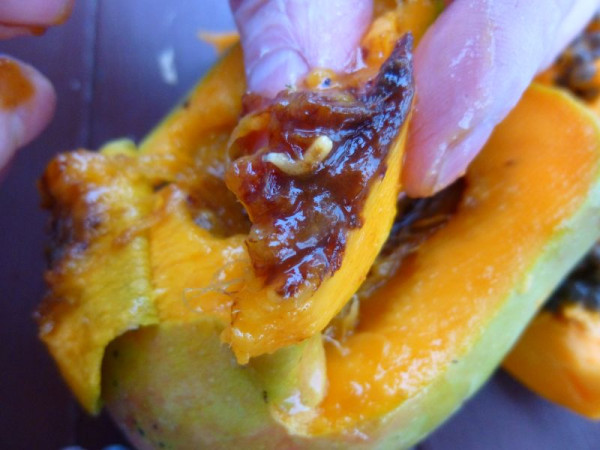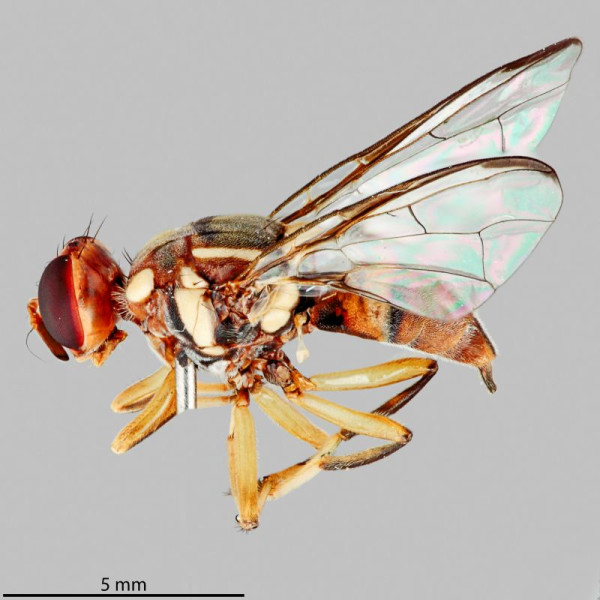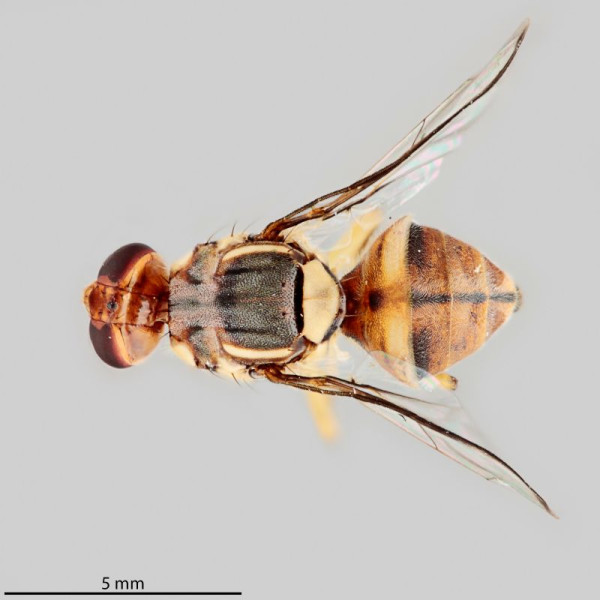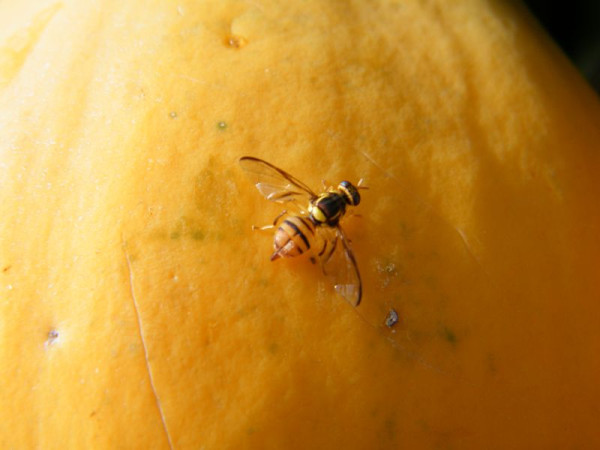Background to the Oriental fruit fly response
Two single male fruit flies were found during regular surveillance in Birkdale and Papatoetoe early in 2025.
Biosecurity New Zealand began a biosecurity operation to search for evidence of any more fruit flies and to restrict the possible spread of any population that may have been there. The finds were unrelated, with the Papatoetoe biosecurity response closing in mid-February, a week before the Birkdale find on 20 February.
After finding no further sign of fruit flies, both responses were closed and restrictions on the movements of fresh produce were lifted.
Oriental fruit fly in Papatoetoe
The Papatoetoe fly was found in early January 2025 in a surveillance trap. It was a single male fruit fly.
A Controlled Area Notice was put in place, legally restricting the movement of fresh fruit, vegetables, and garden waste out of a specified zone. This was to contain any potential population of the insect pest which would significantly damage New Zealand’s horticulture industry and home gardens, if it established here.
Enhanced fruit fly trapping occurred in the Papatoetoe area and a mobile laboratory was set up to check fruit and vegetables collected from the area for fruit fly larvae and eggs.
No other fruit flies were found in surveillance traps and the response was closed on 13 February after 6 weeks of trapping, inspection and movement controls.
Oriental fruit fly in Birkdale
In a separate detection on 20 February, a single male Oriental fruit fly was found in a surveillance trap in Birkdale. Molecular analysis of both the Papatoetoe and Birkdale flies concluded they were not related.
A Controlled Area Notice, enhanced trapping and a mobile laboratory were put in place as had occurred with the Papatoetoe find. Controls were lifted on 10 April following 7 weeks of trapping, inspection and controls and no further finds of fruit flies.
Keep vigilant for other fruit flies
Although we are now free of Oriental fruit fly, it will take a big effort from all New Zealanders to keep it out. If travelling overseas, don’t bring fresh fruit or vegetables home. If you do, declare this on your arrival card (the New Zealand Traveller Declaration) when you return. Encourage visitors to do the same.
If you think you’ve found a fruit fly or seen what look like its maggots in fruit, call our Exotic Pest and Disease Hotline immediately on 0800 809 966.
Oriental fruit flies are about 6 mm to 8 mm long and are reddish-brown with yellow markings.
Larvae look like white long-grain rice.

Fruit fly larvae on a papaya fruit.
Risk to New Zealand of fruit flies
Oriental fruit fly would jeopardise our multi-billion-dollar horticulture industry, with 80% of New Zealand’s horticulture crops susceptible to attack, and have serious effects on home gardens.
Fruits and vegetables attacked by fruit fly are inedible.
Any fruit and vegetables would be subject to trade restrictions.
Keeping them out
To keep Oriental fruit fly out, New Zealand:
- imposes tough requirements on imported produce
- checks passengers, luggage, and freight at the border
- has had a dedicated trapping programme since the 1970s.
The traps are an early-warning system, telling us if flies have arrived, so we can eradicate them.
Surveillance programmes
Biosecurity New Zealand’s routine national surveillance programme looks out for 100 species of fruit fly, including the Oriental fruit fly.
- More than 7,800 traps are set around the country, with 5,000 in Auckland where the risk is greatest.
- Pheromones are used to lure flies into the traps.
- Most traps are placed near airports, seaports, and densely populated areas – where flies would most likely enter the country.
Trapping runs from September till June, when fruit flies are active. Any catches trigger a response similar to the Auckland responses. If a breeding population is found, insecticide treatments are used to get rid of it. As we did not find a breeding population in Auckland, insecticides were not needed.
Find out more about our surveillance programmes for pests and diseases
Pictures to help you identify Oriental fruit fly

A side view of an Oriental fruit fly.

What the top of an Oriental fruit fly looks like.

An adult Oriental fruit fly laying eggs on a papaya fruit.
Who to contact
If you have questions about Oriental fruit fly eradication, email info@mpi.govt.nz








